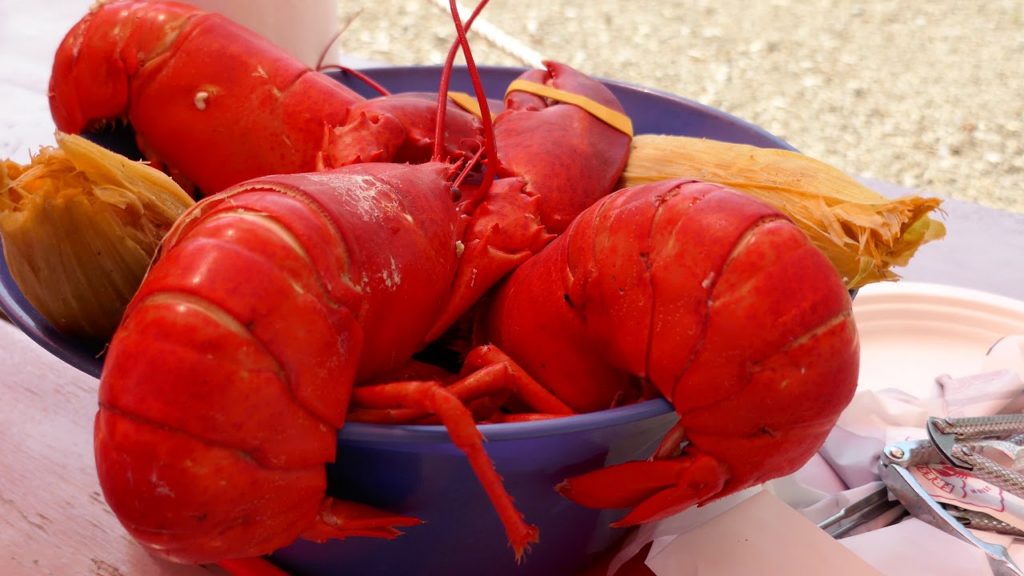Succulent Maine lobster is a treat for locals and visitors alike. Learn about lobster, how to cook it, and how to eat it. Lobster is found abundantly along the Maine shoreline due to the crisp cold waters and rocky bottom which makes fertile feeding ground. Many people mistakenly believe that lobster is red by nature. Lobster is only red after being cooked. While living, lobster is greenish and rarely, blue.
The Maine Lobster Industry
The sales of Maine lobster are a major contributor to the state’s economy and millions of pounds are caught annually. The lobster industry provides jobs for lobster harvesters, boat manufacturers, eateries, and lobster processors. Although lobster harvest high season is between June and December, lobsters is caught year-round – keeping business’ active and thriving.
Cooking Lobster
Typically lobster is boiled, though there are many ways to prepare it otherwise. When visiting Maine and the local lobster pounds, one may see large steaming pots of lobster with a pungent odor of seafood in the air. Here’s how lobster is cooked at home:
- Fill and heat a large stock, or lobster pot, with water. Bring to a boil.
- Without removing the bands on the lobster’s claws, carefully drop the lobster into the boiling water head first. Always put them in head first as the most humane way to kill them quickly.
- Cook until the lobster shell is red or about 8 minutes per pound.
- Remove lobster from boiling water with tongs. Drain briefly over the pot, then plate.
Eating Lobster
Visitors to the state are generally encouraged in dining establishments to wear the traditional lobster bib while handling lobster in the shell. Though it may look, and feel silly, the bib serves the purpose of saving one’s clothing from stains. Shelling lobster is not difficult, yet it is messy. Here’s how to do it:
- Pull off the large claws and legs. Separate the claws from the legs.
- Pull off the smaller legs.
- Snap off the tail at the base where it attaches to the body. Grasp the body with one hand and the tail with the other, force the tail upward toward the back of the lobster and it will separate easily. Snap off the small tail fins.
- Use a nutcracker to crack the claws and the knuckles of the big legs. Remove meat with fingers or a metal pick.
- Use a fork or fingers to push the tail meat from the small tail end out of through the upper end. Pull off the meaty back flap from the tail and remove the vein that runs down the back. Discard the vein but keep the back flap and tail meat.
- Set all meat aside and discard shells.
- Sucking the meat out of the tiny legs is a delicacy as is “picking” the body for some people.
Boiled lobster meat is often enjoyed with drawn butter simply by dipping and eating. Corn on the cob and blueberry pie are traditional offerings with lobster dinners. Lobster rolls are a tasty alternative to the mess of shelling lobster.
Where to Find Maine Lobster
Maine lobster is found throughout the state and most abundantly along the coast. For those not in Maine, many fine restaurants list Maine lobster on the menu or lobster may be ordered on the internet.

